-
 Bitcoin
Bitcoin $83,931.6545
5.30% -
 Ethereum
Ethereum $1,572.8639
3.20% -
 Tether USDt
Tether USDt $0.9996
0.03% -
 XRP
XRP $2.0482
3.91% -
 BNB
BNB $587.9476
2.20% -
 Solana
Solana $121.5792
8.45% -
 USDC
USDC $1.0000
0.01% -
 Dogecoin
Dogecoin $0.1608
3.94% -
 TRON
TRON $0.2432
2.72% -
 Cardano
Cardano $0.6298
4.65% -
 UNUS SED LEO
UNUS SED LEO $9.4009
-0.16% -
 Chainlink
Chainlink $12.7687
6.00% -
 Avalanche
Avalanche $19.2318
5.65% -
 Toncoin
Toncoin $2.9808
0.79% -
 Stellar
Stellar $0.2359
3.03% -
 Sui
Sui $2.2309
6.23% -
 Shiba Inu
Shiba Inu $0.0...01228
6.03% -
 Hedera
Hedera $0.1692
-0.17% -
 Bitcoin Cash
Bitcoin Cash $312.0710
6.57% -
 MANTRA
MANTRA $6.4061
-0.12% -
 Litecoin
Litecoin $76.7972
4.86% -
 Polkadot
Polkadot $3.5703
3.18% -
 Dai
Dai $1.0001
0.01% -
 Hyperliquid
Hyperliquid $15.9233
10.71% -
 Bitget Token
Bitget Token $4.3322
2.60% -
 Ethena USDe
Ethena USDe $0.9988
0.02% -
 Pi
Pi $0.6134
4.10% -
 Monero
Monero $204.0458
1.68% -
 Uniswap
Uniswap $5.2758
5.44% -
 OKB
OKB $53.3918
1.87%
How does virtual educational content in the Metaverse achieve value transfer through NFT?
In the Metaverse, NFTs enable verifiable ownership of unique educational assets, facilitating value transfer through secure, blockchain-based buying and selling on marketplaces; smart contracts automate transactions, while legal frameworks are still developing.
Mar 06, 2025 at 01:36 pm
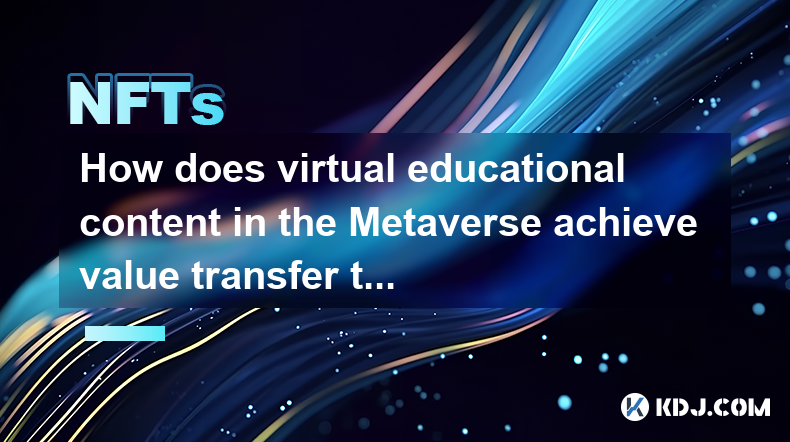
Key Points:
- NFTs provide verifiable ownership of unique virtual educational assets within the Metaverse.
- Value transfer occurs through the buying, selling, and trading of these NFTs on marketplaces.
- Utility within the Metaverse determines the value and demand for these educational NFTs.
- Smart contracts automate the transfer process and ensure transparency and security.
- Different NFT standards and blockchain platforms offer varied functionality and costs.
- Legal and regulatory frameworks are still evolving regarding NFT ownership and intellectual property.
How Does Virtual Educational Content in the Metaverse Achieve Value Transfer Through NFT?
The Metaverse, with its immersive and interactive environments, presents exciting opportunities for education. However, ensuring the value of educational content within this digital realm requires innovative solutions. Non-Fungible Tokens (NFTs) are emerging as a powerful mechanism for achieving this, allowing for verifiable ownership and transfer of value for virtual educational assets.
NFTs, by their unique and non-interchangeable nature, provide a solution to the problem of digital asset ownership. Each NFT representing a piece of virtual educational content—a course, a lecture recording, access to a virtual classroom, or even a digital certificate—is distinct and verifiable on the blockchain. This unique identification is crucial for establishing ownership and facilitating secure transactions.
The process of value transfer through NFTs in this context is essentially the buying and selling of these unique educational assets. This occurs on various NFT marketplaces, which operate similarly to traditional online marketplaces but with the added security and transparency of blockchain technology. The price of an NFT is determined by market forces, including the perceived value of the educational content, its scarcity, and the demand from learners.
The inherent value of an educational NFT is directly tied to its utility within the Metaverse. An NFT granting access to an exclusive virtual classroom with renowned instructors will naturally command a higher price than an NFT for a generic online lecture. The more valuable and exclusive the access or content, the higher the potential for value transfer.
The technology behind the transfer itself is typically facilitated by smart contracts. These self-executing contracts automatically transfer ownership of the NFT from the seller to the buyer upon successful payment, ensuring a secure and transparent process. This eliminates the need for intermediaries and reduces the risk of fraud or disputes.
Different blockchain platforms and NFT standards (like ERC-721 and ERC-1155 on Ethereum) offer varied functionality and cost implications. Some platforms may offer lower transaction fees or more advanced features, impacting the overall cost and efficiency of the value transfer process. Choosing the right platform is crucial for optimizing the transaction process.
The legal and regulatory landscape surrounding NFTs and intellectual property rights is still developing. Clear guidelines regarding ownership, licensing, and the intellectual property rights associated with the underlying educational content are essential for the long-term viability of this system. Legal complexities around copyright and usage rights need careful consideration.
Different Types of Educational NFTs and their Value Transfer Mechanisms:
- Access NFTs: These grant access to specific virtual classrooms, courses, or events. Value is determined by the reputation of the instructor, the exclusivity of the content, and the potential learning outcomes. Transfer involves the buyer receiving access rights via the NFT's transfer on the blockchain.
- Certificate NFTs: These act as verifiable proof of completion of a course or program. Their value is tied to the recognition and prestige of the issuing institution. Transfer simply involves changing the NFT's owner on the blockchain.
- Content NFTs: These represent ownership of specific pieces of educational content, such as a 3D model, interactive simulation, or a video lecture. The value depends on the quality and uniqueness of the content and its potential use within the Metaverse. Transfer is similar to access NFTs.
- Fractionalized NFTs: This allows for the ownership of a single asset to be divided amongst multiple parties. This could make high-value educational content more accessible. Transfer involves the transfer of fractions of ownership on the blockchain.
The Role of Smart Contracts in Secure Value Transfer:
Smart contracts are the backbone of secure NFT transactions. They automate the process, eliminating the need for intermediaries and reducing the risk of fraud. A smart contract for an educational NFT would typically include clauses specifying the terms of the sale, including the price, payment method, and the transfer of ownership rights upon successful payment. This automation ensures transparency and security. The immutability of the blockchain provides a permanent record of the transaction.
Challenges and Considerations:
- Scalability: High transaction volumes on certain blockchains can lead to high gas fees, impacting the accessibility of NFT-based educational content.
- Interoperability: The lack of interoperability between different blockchain platforms can limit the transferability of NFTs.
- Regulation: The regulatory landscape surrounding NFTs is still evolving, and clarity is needed regarding intellectual property rights and taxation.
- Accessibility: Ensuring equitable access to NFT-based educational resources for learners from diverse socioeconomic backgrounds is crucial.
Frequently Asked Questions:
Q: What are the benefits of using NFTs for virtual educational content?
A: NFTs provide verifiable ownership, secure transfer of value, and increased authenticity and scarcity for digital educational assets. This can incentivize creators and increase the value of educational content.
Q: How are the prices of educational NFTs determined?
A: The price is determined by market forces, including the perceived value of the content, its scarcity, demand from learners, and the platform's fees.
Q: Are there any risks associated with using NFTs for educational content?
A: Risks include volatility in NFT prices, potential for scams, and the evolving legal and regulatory landscape. Proper due diligence and understanding of the technology are crucial.
Q: What are the different blockchain platforms used for educational NFTs?
A: Ethereum is currently the most popular platform, but others like Polygon, Solana, and Flow are also gaining traction. Each has different strengths and weaknesses in terms of scalability, cost, and functionality.
Q: How can I create and sell my own educational NFT?
A: You need to create your educational content, choose a suitable blockchain platform, mint your NFT using a compatible wallet and marketplace, and then list it for sale. Consider legal implications of copyright and ownership.
Disclaimer:info@kdj.com
The information provided is not trading advice. kdj.com does not assume any responsibility for any investments made based on the information provided in this article. Cryptocurrencies are highly volatile and it is highly recommended that you invest with caution after thorough research!
If you believe that the content used on this website infringes your copyright, please contact us immediately (info@kdj.com) and we will delete it promptly.
- Binance Lists 3 New Tokens — ONDO, VIRTUAL, and BIGTIME — Following 'Vote To List' Event
- 2025-04-12 04:20:13
- Onyxcoin (XCN) Captures Market Attention Following the Highly Anticipated Launch of Its Goliath Mainnet
- 2025-04-12 04:20:13
- MAGACOIN FINANCE rallies as DOGE and SHIB jump 10%, targeting 100x-1000x returns by the end of 2025
- 2025-04-12 04:15:14
- Is Dogecoin (CRYPTO: DOGE) a good investment? Market cap of $24 billion. And that's after a sharp 50% drop year to date.
- 2025-04-12 04:15:14
- ONDO Secures Huge Exchange Listing, Analyst Predicts New All-Time High
- 2025-04-12 04:10:13
- Fartcoin (FARTCOIN) price surged by over 26% on Friday, making it one of the best-performing tokens in crypto.
- 2025-04-12 04:10:13
Related knowledge
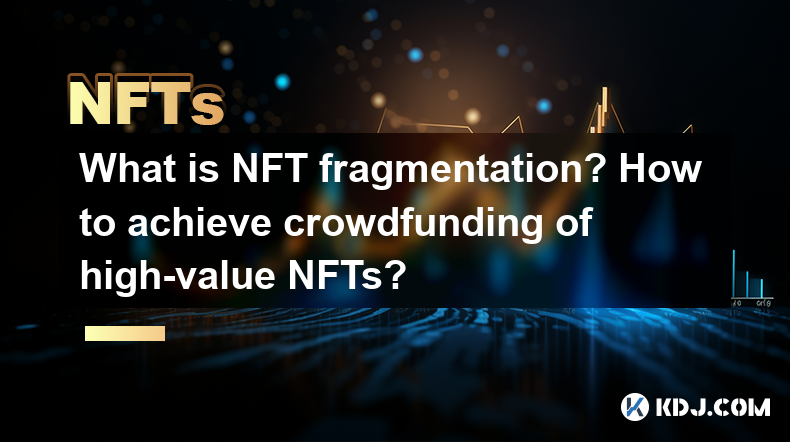
What is NFT fragmentation? How to achieve crowdfunding of high-value NFTs?
Apr 12,2025 at 12:00am
What is NFT Fragmentation? How to Achieve Crowdfunding of High-Value NFTs? NFT fragmentation is a process that allows high-value non-fungible tokens (NFTs) to be divided into smaller, more affordable pieces. This practice democratizes access to valuable digital assets, enabling more people to invest in and own parts of these NFTs. Fragmentation transfor...
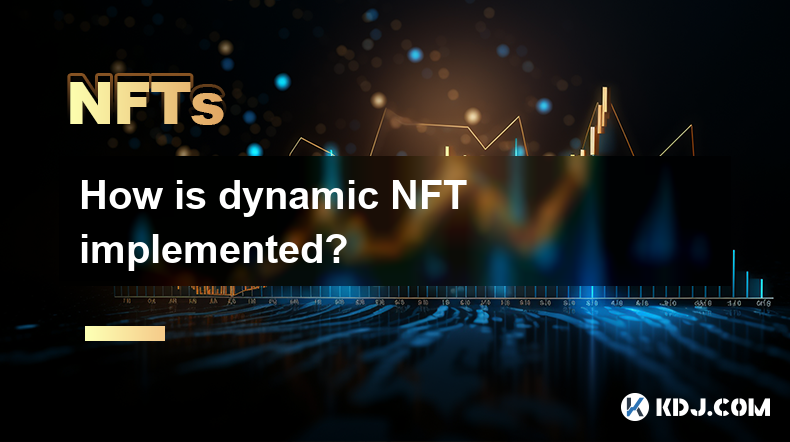
How is dynamic NFT implemented?
Apr 11,2025 at 04:56am
Dynamic NFTs, or dNFTs, represent a fascinating evolution in the world of non-fungible tokens. Unlike static NFTs, which remain unchanged once minted, dynamic NFTs can evolve, change, or update based on certain conditions or external data. This article will delve into the implementation of dynamic NFTs, exploring the technologies and processes involved ...
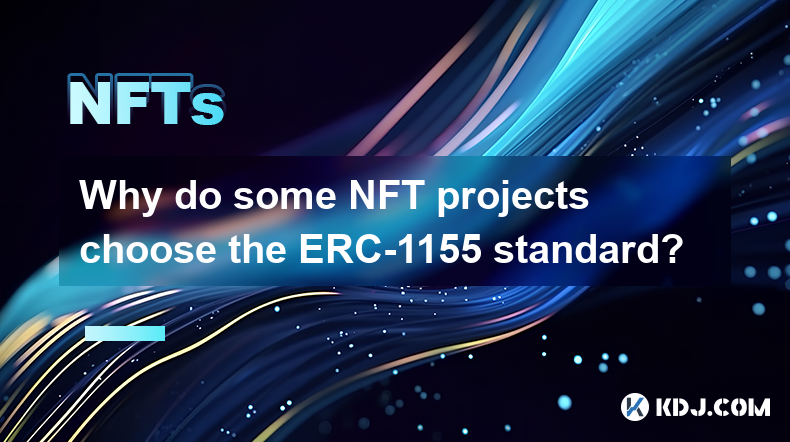
Why do some NFT projects choose the ERC-1155 standard?
Apr 08,2025 at 11:49am
The world of Non-Fungible Tokens (NFTs) has seen a significant rise in popularity and innovation, leading to the development of various token standards. Among these, the ERC-1155 standard has emerged as a versatile and efficient choice for many NFT projects. This article delves into the reasons why some NFT projects opt for the ERC-1155 standard, explor...

What is the essential difference between NFT and Bitcoin?
Apr 11,2025 at 12:14pm
The world of cryptocurrencies and digital assets has seen significant growth and diversification over the years, with Bitcoin and Non-Fungible Tokens (NFTs) being two of the most talked-about innovations. While both fall under the broader umbrella of blockchain technology, they serve different purposes and have distinct characteristics. This article wil...
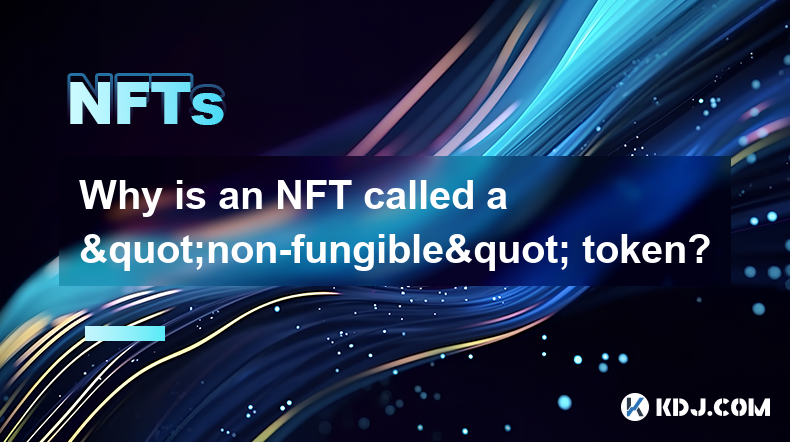
Why is an NFT called a "non-fungible" token?
Apr 11,2025 at 06:15am
An NFT, or Non-Fungible Token, is a unique digital asset that represents ownership or proof of authenticity of a specific item or piece of content, typically stored on a blockchain. The term 'non-fungible' is crucial to understanding the nature and value of these tokens. In this article, we will delve into the reasons why an NFT is called a 'non-fungibl...
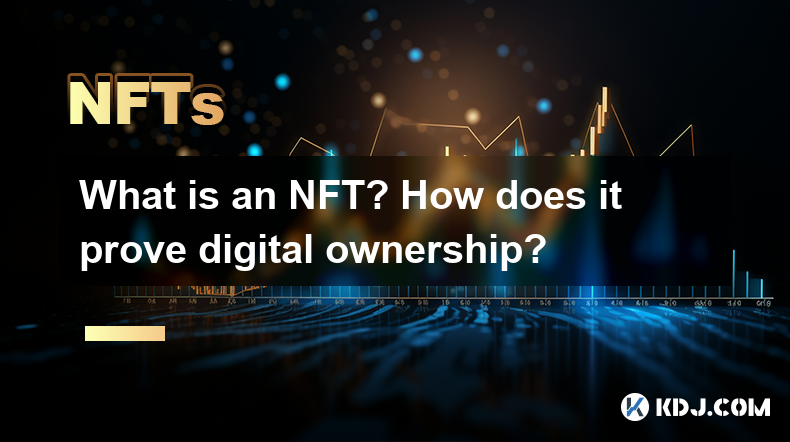
What is an NFT? How does it prove digital ownership?
Apr 09,2025 at 11:21pm
An NFT, or Non-Fungible Token, is a unique digital asset that represents ownership or proof of authenticity of a specific item or piece of content, typically stored on a blockchain. Unlike cryptocurrencies such as Bitcoin or Ethereum, which are fungible and can be exchanged on a one-to-one basis, NFTs are distinct and cannot be exchanged on a like-for-l...

What is NFT fragmentation? How to achieve crowdfunding of high-value NFTs?
Apr 12,2025 at 12:00am
What is NFT Fragmentation? How to Achieve Crowdfunding of High-Value NFTs? NFT fragmentation is a process that allows high-value non-fungible tokens (NFTs) to be divided into smaller, more affordable pieces. This practice democratizes access to valuable digital assets, enabling more people to invest in and own parts of these NFTs. Fragmentation transfor...

How is dynamic NFT implemented?
Apr 11,2025 at 04:56am
Dynamic NFTs, or dNFTs, represent a fascinating evolution in the world of non-fungible tokens. Unlike static NFTs, which remain unchanged once minted, dynamic NFTs can evolve, change, or update based on certain conditions or external data. This article will delve into the implementation of dynamic NFTs, exploring the technologies and processes involved ...

Why do some NFT projects choose the ERC-1155 standard?
Apr 08,2025 at 11:49am
The world of Non-Fungible Tokens (NFTs) has seen a significant rise in popularity and innovation, leading to the development of various token standards. Among these, the ERC-1155 standard has emerged as a versatile and efficient choice for many NFT projects. This article delves into the reasons why some NFT projects opt for the ERC-1155 standard, explor...

What is the essential difference between NFT and Bitcoin?
Apr 11,2025 at 12:14pm
The world of cryptocurrencies and digital assets has seen significant growth and diversification over the years, with Bitcoin and Non-Fungible Tokens (NFTs) being two of the most talked-about innovations. While both fall under the broader umbrella of blockchain technology, they serve different purposes and have distinct characteristics. This article wil...

Why is an NFT called a "non-fungible" token?
Apr 11,2025 at 06:15am
An NFT, or Non-Fungible Token, is a unique digital asset that represents ownership or proof of authenticity of a specific item or piece of content, typically stored on a blockchain. The term 'non-fungible' is crucial to understanding the nature and value of these tokens. In this article, we will delve into the reasons why an NFT is called a 'non-fungibl...

What is an NFT? How does it prove digital ownership?
Apr 09,2025 at 11:21pm
An NFT, or Non-Fungible Token, is a unique digital asset that represents ownership or proof of authenticity of a specific item or piece of content, typically stored on a blockchain. Unlike cryptocurrencies such as Bitcoin or Ethereum, which are fungible and can be exchanged on a one-to-one basis, NFTs are distinct and cannot be exchanged on a like-for-l...
See all articles























































































